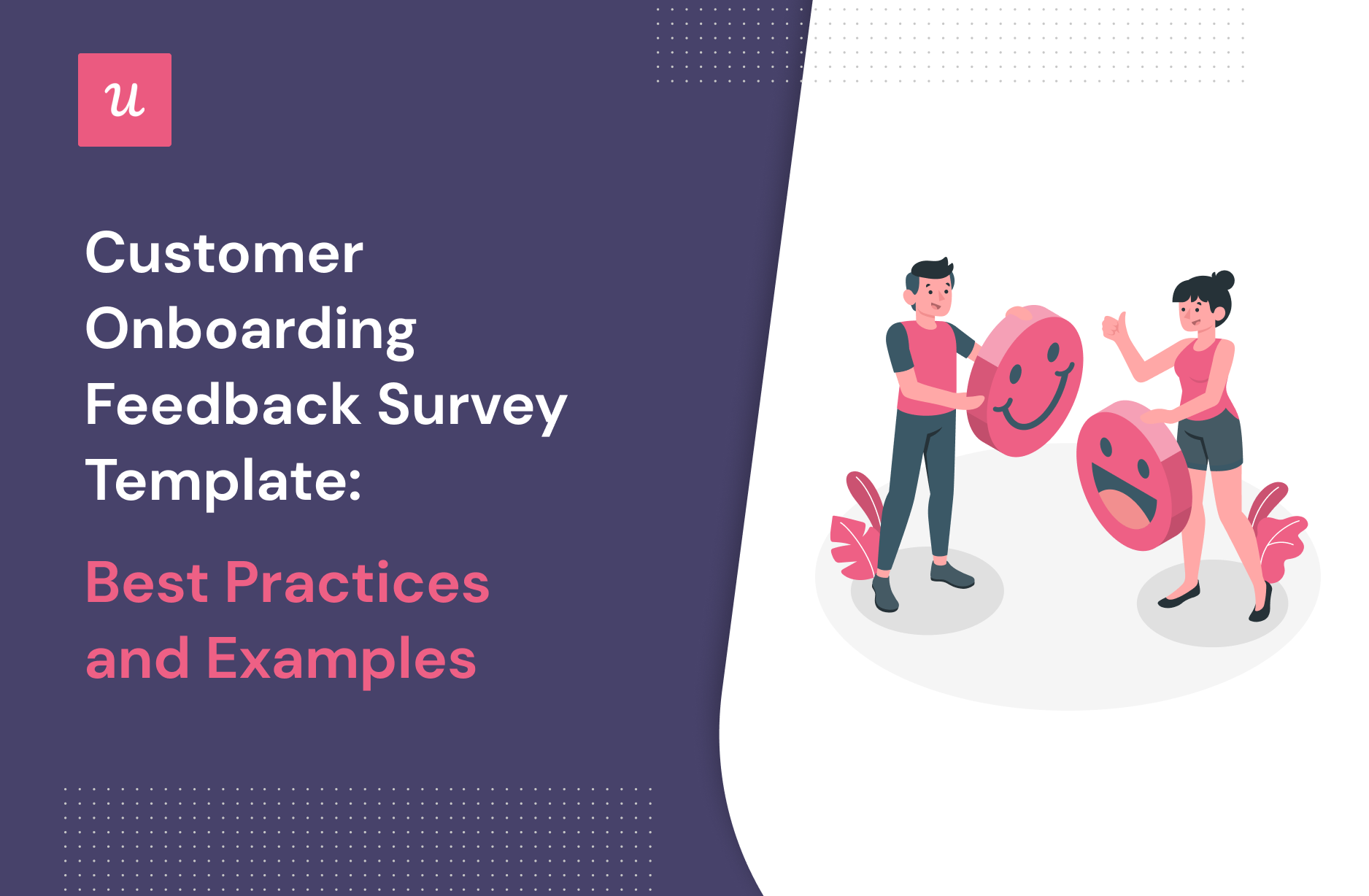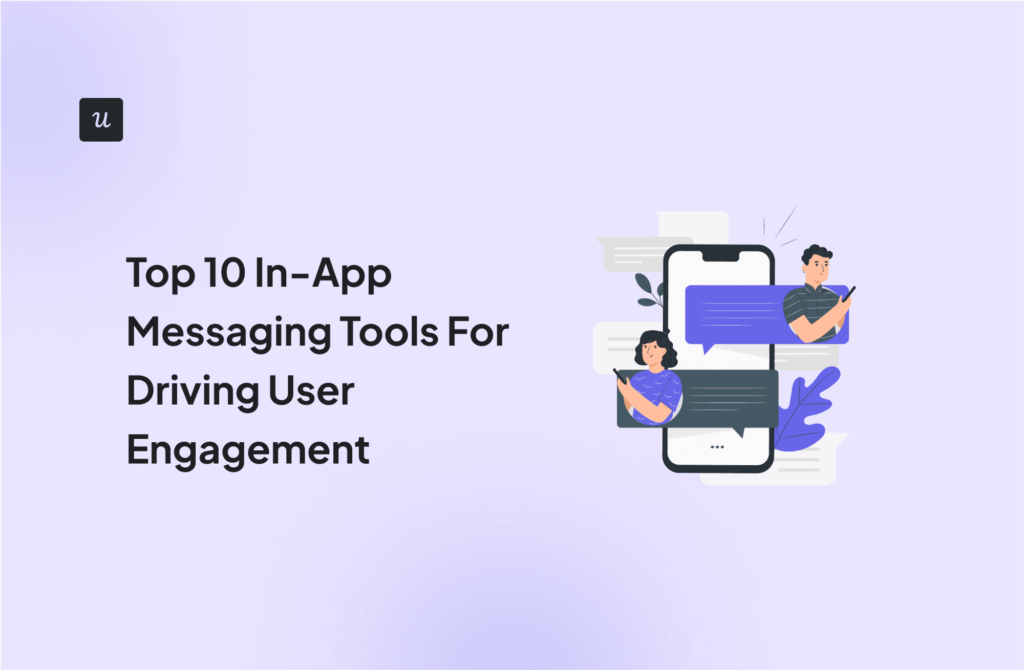
Customer Onboarding Feedback Survey Template Best Practices and Examples
Using a customer onboarding feedback survey template makes your survey process easier. It takes the guesswork out, granting you access to lists of questions to ask and know your customers more intimately.
This article highlights different onboarding survey questions and best practices for creating your survey. You’ll also find inspiring examples from successful SaaS companies.
Get The Insights!
The fastest way to learn about Product Growth, Management & Trends.
TL;DR
- Customer onboarding feedback surveys help you learn more about your customers and show you what needs to be optimized in your onboarding processes.
- The data obtained from onboarding surveys can be used to provide personalized experiences to new customers. This data is also useful for removing friction and optimizing the user experience.
- What to include in your customer onboarding feedback survey?
- Short questions to understand users’ goals and jobs to be done
- General questions for assessing the overall customer satisfaction
- Survey questions that measure customer loyalty
- Open-ended questions about how you can improve
- Use NPS surveys to measure customer sentiment. Reach out to passives and promoters, and incentivize them to rate you, or share your product with friends. Contact detractors to find why they’re dissatisfied with your brand and offer to help.
- Welcome screens are great for collecting user data during onboarding. This will enable you to provide personalized experiences and convert more users.
- Onboarding feedback surveys sent halfway through the onboarding will let you know how customers feel about the process. You’ll generate data that will show you how to make onboarding better for users—not to mention it’s a sign to customers that you care.
- Send general satisfaction surveys to customers at different points in their journey. You’ll identify and address friction areas quickly.
- Customer Effort Score (CES) surveys are best triggered during onboarding when a user renews their plan or subscribes newly, and after interacting with the customer service team.
- Userpilot enables you to create and distribute onboarding surveys without a single line of code.
What is a customer onboarding survey?
SaaS companies use customer onboarding surveys to gauge customer experience with the onboarding process. Feedback surveys can tell how effective your onboarding is and show improvement areas.
What are the benefits of conducting onboarding surveys?
The business value of surveying customers is enormous:
Collect data and personalize the user’s in-app experience
Customer segmentation is the key to driving personalized experiences for customers. And onboarding surveys help you do that effectively.
Through your onboarding survey questions, you can determine how customers found your app, what their objectives are, what success means to them, etc. Collecting this data enables you to break customers into subgroups and address their needs efficiently.

Remove friction and enhance user experience
A remarkable customer experience is at the heart of every successful product.
Use onboarding surveys to dive into customer insights, understand what frustrates them and how you can improve the UX. Maybe there are too many pop-ups? Not enough guidance?
Surveys like the Net Promoter Score, CSAT, and Customer Effort Score work great for identifying friction.

Improve the onboarding process and reduce time to value
With customer insights, you can improve your onboarding process and help future customers fall in love more quickly.
The reason it’s important to constantly iterate and optimize onboarding is that it’s the first interaction with users after they sign up for your tool—and first impressions matter. A good first impression goes a long way in determining retention and attrition rates.
For example, collecting user data enables ConvertKit to cut fluffs in their onboarding, get right to the point, and help customers reach activation faster.

What to include in your customer onboarding feedback survey template
Now that you’re convinced customer onboarding surveys are important to your business, let’s go over different questions to have in your template.
The idea is not to add all questions—that will be too much for your users. Instead, read through and pick the ones that make sense to your context. Feel free to tweak as necessary.
Short questions to understand users’ goals and jobs to be done
These types of questions are usually included in welcome flows and are used for two primary purposes:
- Segment users
- Track the user’s progress to see if they’re successfully using the relevant features to get their jobs done
Examples of these types of questions:
- What problem are you trying to solve with our app?
- What do you want to achieve with the software today?
- Why are you interested in using this kind of app?
- What will you be using the software for?
- Picture the moment you first signed up. What’s the first action you wanted to do or the outcome you wanted to achieve?
Questions for assessing the overall customer satisfaction
Satisfied customers tend to stick to your tool for longer and vice versa. Use the following questions to gauge customer satisfaction:
- On a scale of 1 to 10, how satisfied are you with your onboarding experience?
- How would you rate your level of knowledge of what our product can do?
- Were you set up with everything you needed to use our product during the onboarding process?
Survey questions that measure customer loyalty
Begin by asking quantitative questions where customers just rate you with numbers or smiley emojis. Follow up with qualitative questions to understand the reasons behind the score they gave you.
Example:
- On a scale of 1 to 10, how likely are you to recommend the product/service to a friend or colleague?
- Why did you choose this score?
Open-ended questions about how you can improve
Questions like these will reveal areas of your onboarding you’re oblivious of. Always ask open-ended questions and act on important/recurring feedback. Examples:
- What can we improve in our onboarding flow?
- Is there anything critical to your success that wasn’t covered during our onboarding process?
Not everyone is willing to contact the support team about issues they run into while onboarding, but asking such open-ended questions gives customers the opportunity to be vocal.
Customer onboarding survey template examples from SaaS companies
This section shows real-life examples of SaaS companies like you killing it with onboarding surveys. Ready? Let’s jump in!
Userpilot’s NPS survey
NPS surveys are used to measure customer loyalty and sentiment. This survey has two parts: the quantitative 11-point scale (0-10) and the follow-up qualitative question that seeks to know why users gave the score they did.
With NPS surveys, you can segment your users into 3 groups: promoters (customers who love you and rate you 9-10), passives ( those who rate you 7-8), and detractors (unhappy customers who rate you less than 6). After segmenting them based on NPS, you’ll develop a personalized success path for each segment and implement it.
Userpilot’s NPS survey template includes an option to be asked later (top right corner). This optionality is great because your prompt may come when users are trying to get something done quickly and don’t have time for surveys or don’t feel they’ve used the app sufficiently enough to rate you.

A survey embedded in a welcome page from Postfity
Companies that collect user data upon sign-up are able to provide more personalized experiences for each segment. This approach is better than providing a generic experience for all users since your app naturally has different use cases that require specialized attention.
Social media scheduling app Postfity, segments users with onboarding surveys embedded in the welcome flow. They use this information to customize the onboarding and other in-app experiences.

Another customer onboarding survey example from Postfity
Again, Postfity collecting more detailed feedback about the users’ jobs to be done with a welcome flow:

Hubspot’s customer onboarding survey
Using a welcome screen to personalize onboarding doesn’t automatically remove friction.
Sometimes it’s more effective to contact customers directly to know whether they’re being onboarded smoothly or not. This is especially useful when your product has a long learning curve.
Hubspot conducts surveys halfway through the onboarding process—they send an email like the one below, asking users to rate their experience so far.

Steal Hubspot’s approach if you think your onboarding needs a touch. You’ll gather enough feedback to make data-driven decisions.
Slack’s general customer satisfaction surveys
Acquisition is critical to business success, but what happens after those customers sign up? They’ll leave if you can’t make them happy, and you don’t want such a leaky bucket in your SaaS!
This is why putting effort into customer satisfaction is important. Customer satisfaction surveys help you keep tabs on user happiness as they journey through your product.
Here’s an example from Slack:

Notice how the company gives customers several options to choose from and a box to provide more qualitative feedback if they want.
A good practice is to send surveys like this at all critical touchpoints in the user journey— it will help you find issues early and prevent churn.
Hotjar’s customer effort score survey
Customer Effort Score (CES) is a customer experience metric that measures how easy it is for a customer to interact with you. Examples of such interactions include contacting the support team, making payments, getting onboarded, etc.
You generally want to keep business interactions as low-effort as possible. The more time and effort is required for users to get stuff done in your app, the more they perceive your product as hard to use.
The customer effort score can be measured using this simple template from Hotjar. A detail we like about this example is using emojis instead of numbers to measure effort.

How can Userpilot help you with creating and distributing customer onboarding surveys?
Userpilot allows you to create and customize in-app microsurveys code-free. You can embed the surveys in different UI patterns such as modals, slideouts, tooltips etc.
We understand that users are at different points in their journey, so it doesn’t make sense to trigger the same surveys for all of them. Our segmentation feature helps you segment users and trigger surveys for the right segment at the right time.
For example, you can set surveys to be triggered once users engage with a specific feature. Or segment trial users and trigger the survey only for them.

That’s not all. You can not only measure the NPS score but follow up later to collect qualitative insights.

After gathering qualitative insights, you can tag the survey responses by themes and keywords to identify common issues customers face throughout the onboarding process.

If you want to create longer surveys, Userpilot has your back, too. Userpilot has an integration with Typeform which allows you to embed your Typeform surveys in-app and increase response rates.

Conclusion
User onboarding surveys are one of the most effective tools for understanding user sentiment, identifying opportunities to improve your product, and boosting adoption, engagement, and retention rates.
Hopefully, this article has inspired you and given some ideas on how to create your customer onboarding feedback survey template.
Want to create customizable onboarding surveys and trigger them to the right user at the right time code-free? Book a Userpilot Demo to learn more.



![Your Ultimate Guide to B2B Loyalty Programs [With Examples] cover](https://blog-static.userpilot.com/blog/wp-content/uploads/2024/05/your-ultimate-guide-to-b2b-loyalty-programs_f1c50abb9e916dff8d9b094dfefeeceb_2000-1024x670.png)

